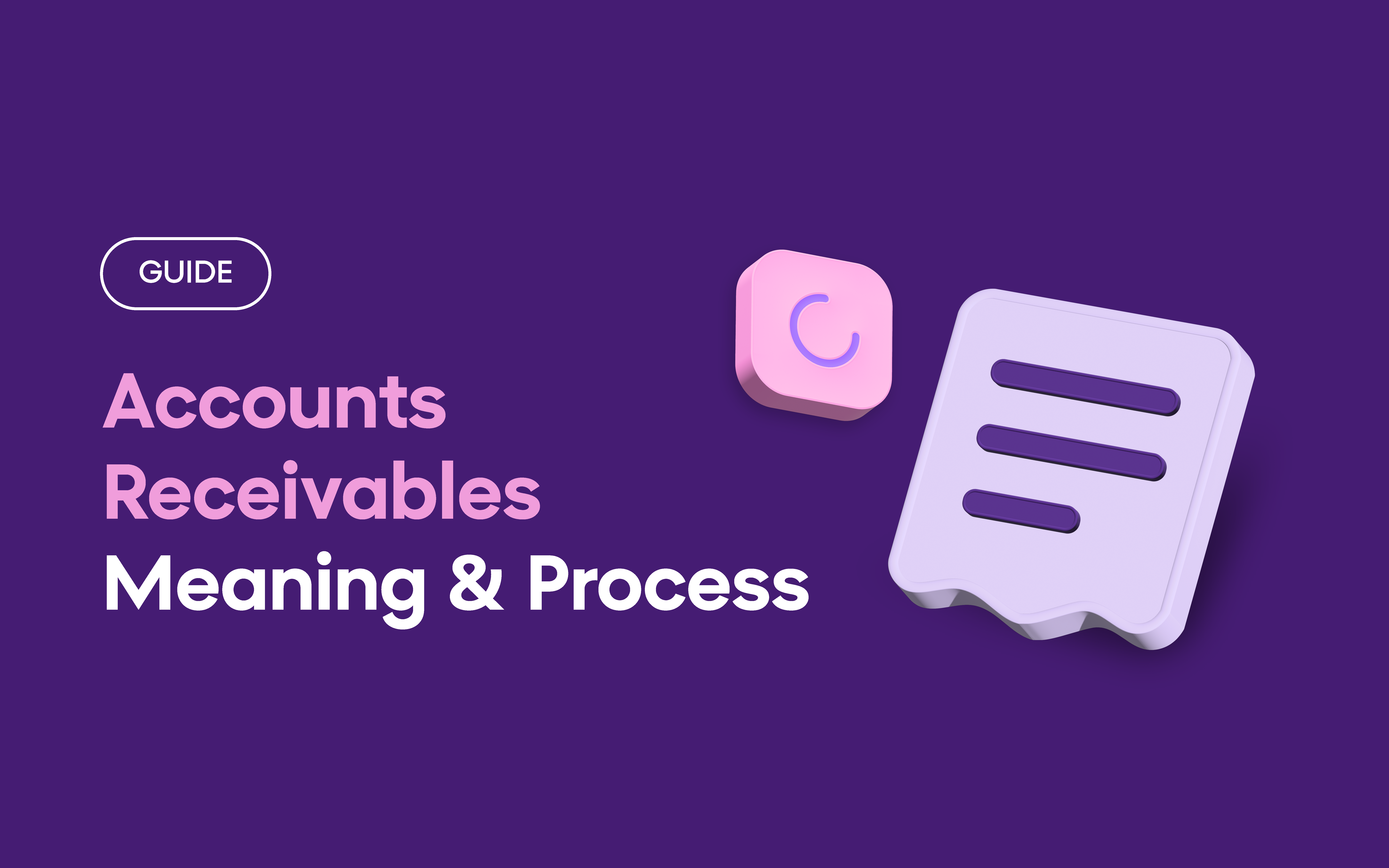Managing accounts receivable (AR) is key to maintaining steady cash flow, which is essential for a business’s success. It involves tracking customer payments and ensuring they are collected on time. Manually handling AR processes can be time-consuming and prone to errors that can cause delays and harm a business’s finances.
AR automation can change the game by making the tasks faster, more accurate, and easier to handle. In this blog, we’ll explain how AR automation works, its benefits, and how it can help your business stay on top of its cash flow.
What are Accounts Receivable (AR)?
Accounts receivable are the money a business is waiting to receive from customers for products or services already provided, but not yet paid for. It’s essentially credit extended to customers, creating an outstanding balance that needs to be collected within a specified time.
For example, when a business provides services and sends an invoice payable in 30 days, the amount on that invoice becomes accounts receivable. Proper AR management ensures a steady cash flow, which is crucial for covering operational costs, paying employees, and fueling growth.
However, issues like delayed payments, disputes, or administrative errors can disrupt cash flow, making efficient AR management essential for financial stability.
What is Accounts Receivable (AR) automation?
AR automation utilizes software to optimize and simplify the end-to-end accounts receivable management processes. It replaces manual methods with technology to make tasks like invoicing, payment reminders, and tracking faster and more accurate.
Key features of AR automation include:
- Automated invoicing: Creating and sending invoices automatically
- Payment tracking: Monitoring payment due dates and sending reminders for overdue invoices.
- Integration with accounting systems: Seamlessly connecting with existing accounting or ERP systems for synchronized financial data.
- Real-time reporting: Providing insights into outstanding balances and payment trends.
With automation, businesses can save time, reduce errors, and focus more on strategic goals rather than administrative tasks.
Does Your Business Need Accounts Receivable (AR) Automation?
AR automation isn’t just for large enterprises. Even small and medium-sized businesses can benefit from it. Here’s how to know if your business could use AR automation:
- Delayed payments are common: If you find yourself constantly chasing payments, automation can help by automating follow-ups and reminders, ensuring they’re sent on time.
- High invoice volume: If you manage a large number of invoices, doing it manually can increase the chances of mistakes. AR automation can handle invoicing and tracking, reducing errors.
- Time-consuming processes: If you spend too much time on tasks like reconciling payments or generating reports, AR automation can speed them up, letting you focus on more important areas of your business.
- Cash flow issues: If delayed payments are impacting your cash flow, automation can speed up collections and provide visibility.
If any of these challenges sound familiar to you, it may be time to invest in AR automation tools.
4 Advantages of Accounts Receivable (AR) Automation
- Faster invoice processing: Manually creating and sending invoices takes time, especially for businesses with recurring clients or high transaction volumes. AR Automation ensures invoices are generated and delivered promptly, reducing payment delays and improving collection timelines.
- Easier payment collection: AR automation tools can send automated reminders before and after payment due dates, reducing the chances of late payments. Some tools also integrate with payment gateways, allowing customers to pay directly through secure links, making the process more convenient.
- Minimizing errors and disputes: Manual errors in invoicing or payment tracking can lead to disputes and significant business delays. Automation eliminates these mistakes by ensuring accurate calculations and maintaining error-free records, fostering trust and smoother transactions.
- Access to real-time financial data: With dashboards and analytics, AR automation tools provide a clear view of your cash flow and outstanding receivable. Businesses can track trends, spot potential issues early, and make informed decisions based on real-time data.
How OPEN Money Can Help You with AR Automation
OPEN Money helps businesses manage accounts receivable easily by automating tasks like invoicing and payment reminders. It also simplifies accounts receivable reconciliation by sending invoices with payment links and offering convenient payment methods. Additionally, it provides clear cash flow insights, helping businesses reduce delays and make better financial decisions. Designed with MSMEs in mind, it’s an excellent option for smaller companies looking to streamline their processes.
OPEN adheres to globally recognized standards, including RBI compliance, PCI DSS, ISO 27001, and AICPA SOC, ensuring secure, reliable, and compliant financial solutions for businesses of all sizes.
OPEN is a comprehensive business payments platform that allows you to generate bills and invoices, track expenses, pay vendors, and reconcile payments seamlessly. Integrating OPEN with your bank accounts and accounting software simplifies your financial management process from beginning to end.
Conclusion
Accounts receivable are essential for your business’s financial health, and automating AR processes can make managing them much more easier. With features like faster invoicing, improved collections, and real-time insights, AR automation tools provide the efficiency and accuracy needed to maintain a steady cash flow.
Whether you’re a small business owner or managing a larger enterprise, adopting AR automation is a step towards reducing manual workloads and focusing on strategic growth.
FAQs
1. What is accounts receivable (AR) automation?
AR automation replaces manual processes like invoicing and payment tracking with software tools, making it easier to manage payments, reduce delays, and avoid errors.
2. Is AR automation suitable for small businesses?
Yes, AR automation is ideal for small businesses. It saves time, reduces costs, and helps manage payments effectively with minimal effort.
3. What does accounts receivable (AR) software do?
It automates tasks like generating invoices, sending reminders, tracking payments, and providing real-time financial reports.
4. Can AR automation integrate with existing accounting systems and ERPs?
Most AR tools can connect with popular accounting systems and ERPs, making it easy to sync data and manage finances seamlessly.
5. How does AR automation improve cash flow?
AR automation speeds up invoicing, ensures timely payment reminders, reduces errors, and provides insights that help businesses make better financial decisions.





